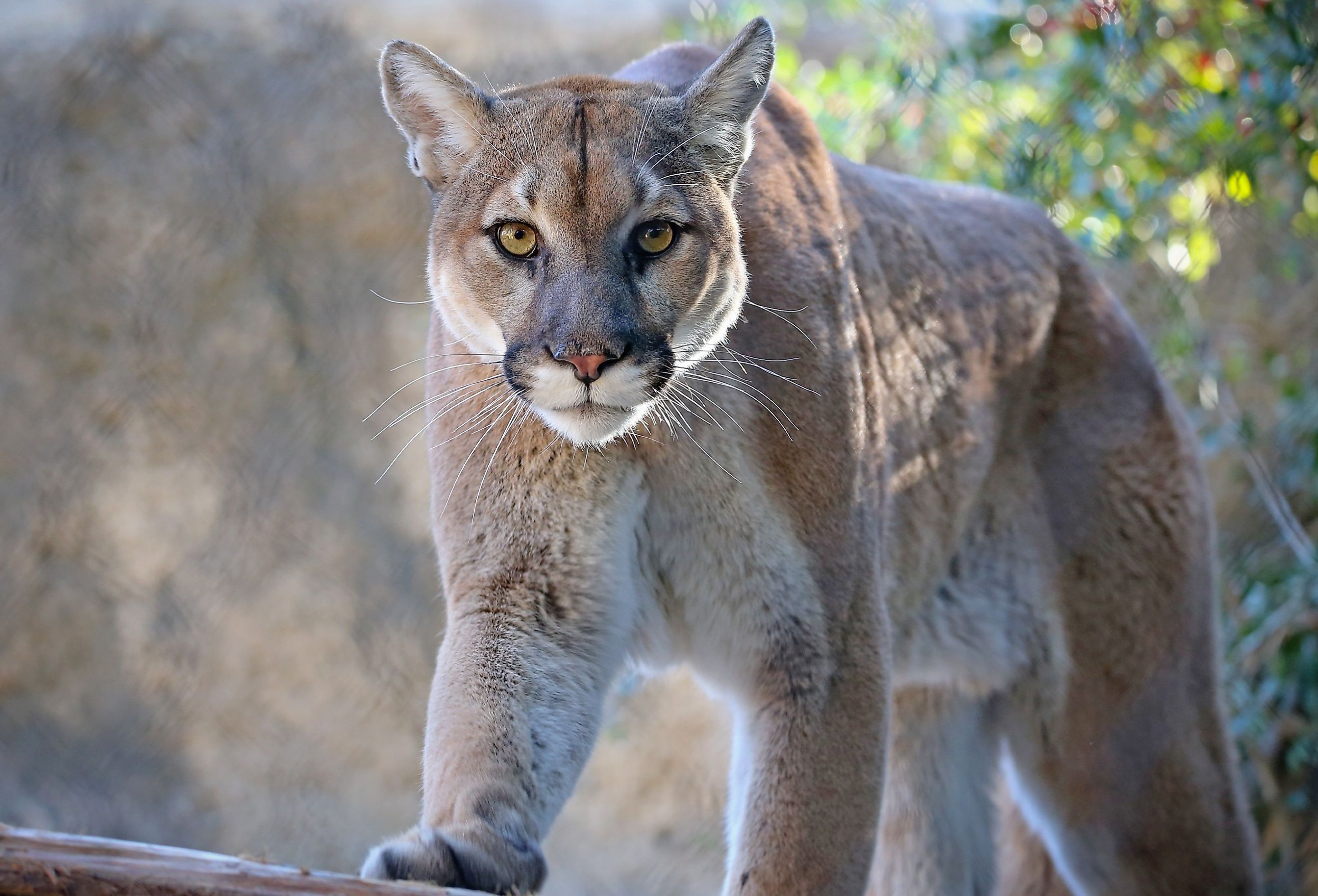
The 11 Deadliest Animals in Colorado
The state of Colorado is a geographical dream, home to a portion of the Rocky Mountains, the Great Plains, and deserts. Surrounded by the states of New Mexico, Oklahoma, Kansas, Nebraska, Wyoming, and Utah, it is an adventurer's dream, with prime skiing and hiking opportunities. But these landscapes bring along wildlife, with hundreds of species residing in Colorado. From innocent and helpful animals like beavers, as well as mainly harmless creatures like armadillos, it is also a breeding ground for dangerous mammals, venomous snakes and spiders, and disease-ridden insects.
Cougar
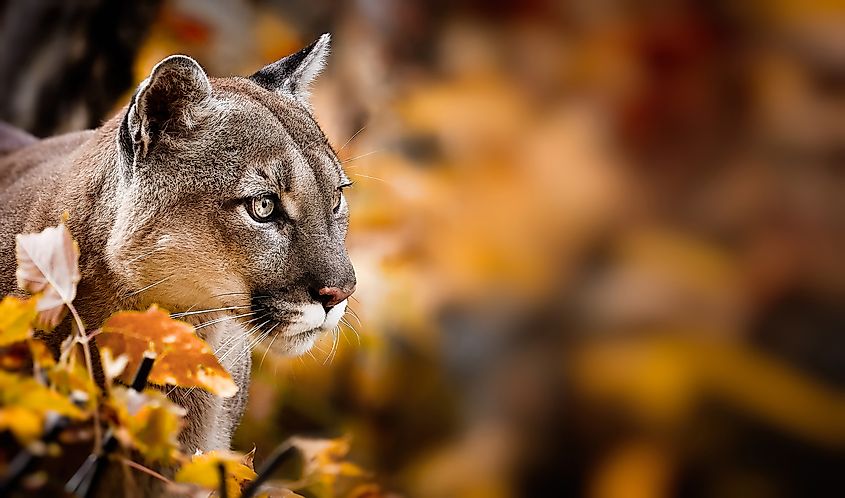
Cougars, also known as pumas and mountain lions, are part of the feline family and live throughout Colorado. They prefer to live in environments such as forests, mountainous areas, and swamps. They are stealthy hunters with a beige coats, long tails, and strong legs. As solitary animals, they keep to themselves unless they are looking to mate. They mainly eat both small and large mammals, such as rabbits, deer, and livestock.
Cougars do not actively seek to hunt adult humans, and usually only attack if threatened or protecting their young. They will hiss and bluff charges in an attempt to assert dominance. Should a cougar try to attack you, slowly back away, never turning your back to them. Throw rocks and other debris, and make loud noises. Do not show fear. Cougars are more of a threat to children and pets and can strike without warning. Keep pets indoors or leashed, and never let children walk behind you on hikes.
Moose
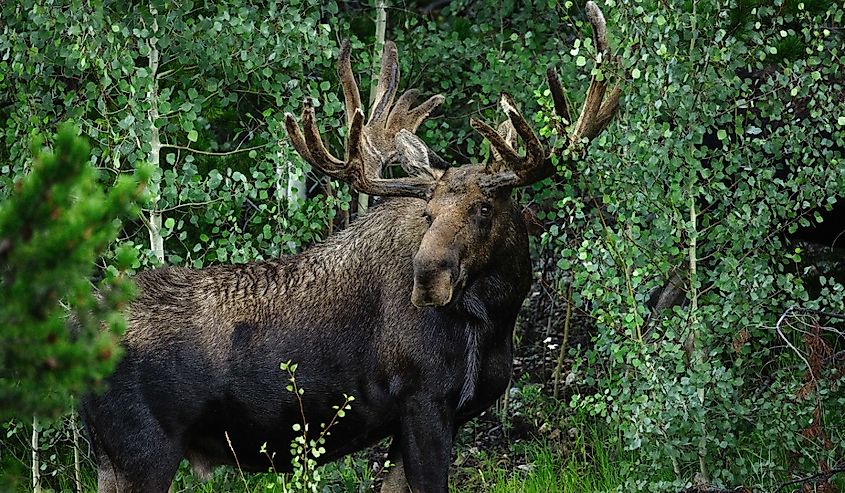
Moose are gigantic animals with massive antlers, large noses, tall legs, and distinctive traits such as the flap below their chin and the hump on their upper back. As solitary creatures, they can be seen grazing in meadows, forests, and near water sources. They eat a variety of plant life, including grass, leaves, twigs, and aquatic vegetation. Moose are docile unless provoked. They are able to fight off predators using their antlers and strong legs, putting up a fight until the very end. If a moose feels threatened, there is a high chance it will charge, and the results can be disastrous.
If a moose manages to get close enough, it will use its antlers to plow into you, its front legs to stomp, and its back legs to kick. This can lead to severe bodily injuries, including broken bones and internal bleeding. If a moose charges you, try to get something between you two, such as a car or a fence. Do not attempt to feed moose, or pet them, or get close for a photo.
Moose are also dangerous when near roadways. If a moose is struck by a vehicle, it is taken out at the legs and sent crashing into the hood and windshield. In a panic, it will kick and struggle to free itself, leading to injuries for both it and the car's passengers. Moose cause several deaths a year throughout the United States due to collisions.
Coyote

Coyotes are medium-sized canines popular in forests, mountainous areas, prairies, and urban areas. Characterized by their varying shades of brown coats, fluffy tails, and pointed ears, these mammals can be seen during the day and night, though they are mainly active at night. They eat small to medium-sized animals, such as rodents, and rabbits, and livestock like chicken and sheep. They don't form the same structured packs as wolves, but can still be heard communicating with each other by howls and yips. Coyotes will occasionally ambush prey as a group to gain the upper hand.
Attacks on adults are rare since coyotes are easily spooked. Coyotes are more of a threat to pets and children. Outdoor cats are a primary source of food for coyotes close to townsites, farms, and cities. They may also attack dogs, even if they are leashed, if given the chance. It's best to not allow cats outside, at least at night, and to keep dogs close. Keep livestock guarded or locked away at night, and keep an eye on children playing outside, especially if they are alone. Should you see a coyote, make loud noises and appear as big as possible to ward it off.
Black Bear
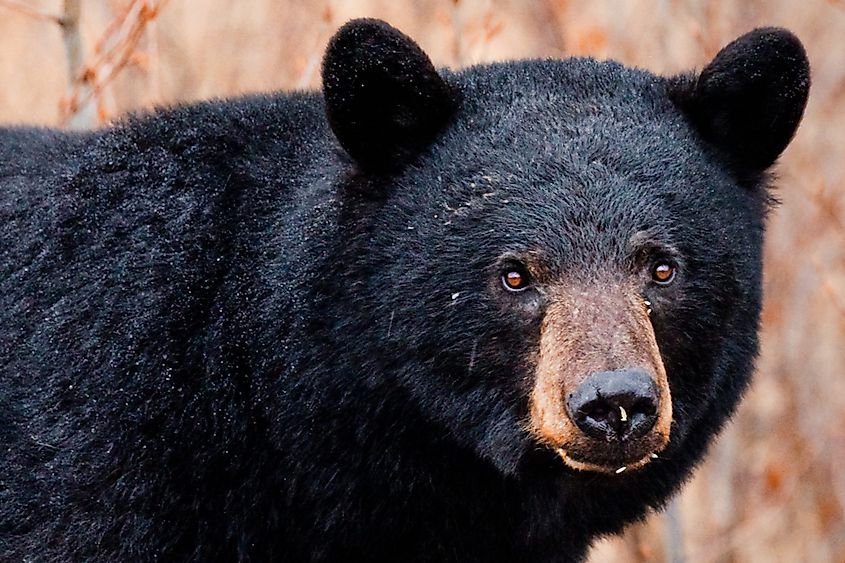
Black bears are known to live in mountainous areas, forests, and meadows. As solitary creatures, they only meet to mate or if a mother is with cubs. They are territorial and will clash with one another if they feel threatened or imposed on. Black bears can be recognized from their rounded ears, stubby tails, short legs, and plump bodies ranging from brown to black. They are much smaller than grizzlies, and not as aggressive.
Black bears are omnivores, feasting on fruits as well as other animals. They are also scavengers and will try to seek out anything remotely edible. This includes garbage, left-out food, and even self-care items that have a pleasant scent. It is important to always keep food and garbage locked away and to not try to feed bears or entice them to come closer to urban areas. Black bears are typically shy and avoid human contact, but should an issue arise, be prepared with bear spray. You will also want to make loud noises and wave your arms. Don't run or appear like prey. Keep children and pets close by when hiking, and if you spot a black bear, give it plenty of space and time to wander off without incident.
Ticks
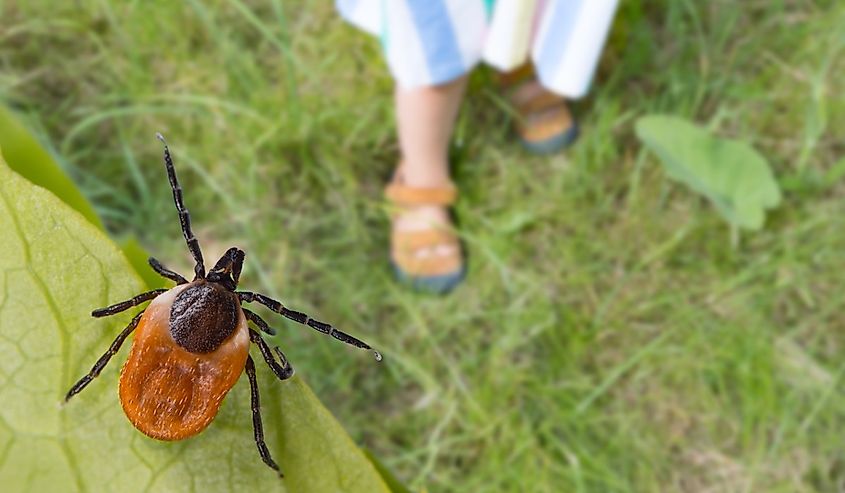
Ticks are blood-sucking creatures that attach to a host and can drink their blood for several days. They commonly go unnoticed, especially on pets, until they begin to fill with blood and become larger. They are common in areas with lots of plant life, which they will sit on and wait for a passing animal to stick to.
The main types of ticks in Colorado are Rocky Mountain wood ticks, American dog ticks, brown dog ticks, lone star ticks, and soft-bodied ticks. They can transfer diseases such as Colorado tick fever, Rocky Mountain spotted fever, tick-borne relapsing fever, and tularemia. Symptoms of these diseases range from severe pain, trouble walking, extreme fevers, rashes, and breathing issues, to flu-like symptoms.
The best way to avoid tick bites is to wear long clothing when in tick territory and use a tick repellant. When you arrive home or return to camp, check yourself and others, including pets, for ticks. If you find one, remove it carefully and save it for identification. Watch for symptoms and seek medical care.
Common Snapping Turtle
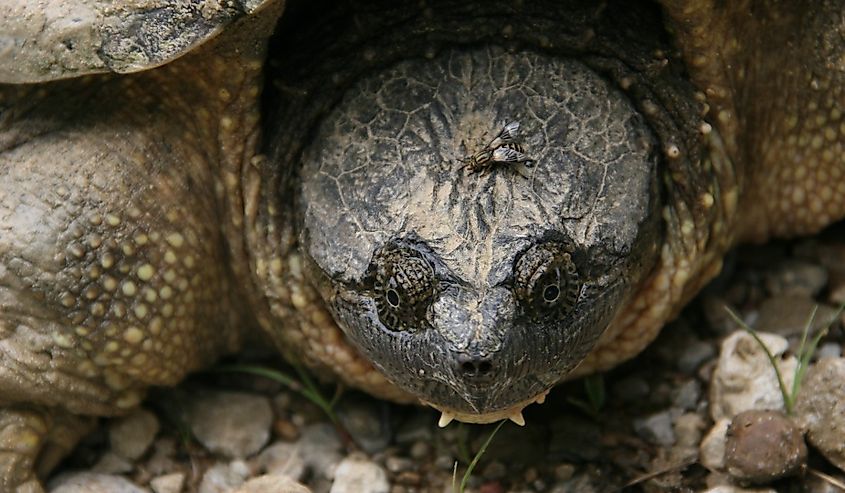
Common snapping turtles are a large species of turtle that live primarily in slow-moving bodies of water, such as creeks, swamps, lakes, ponds, and shallow rivers. They have also been known to bury themselves in wet mud. They have rugged shells with ridges which are usually brown or black, as well as a beak-shaped jaw perfect for clamping down on prey. As omnivores, they feast on plant life as well as fish, amphibians, birds, and small mammals. They are patient, waiting for the right time to strike. Their bite force is incredibly strong, and can easily break bones and tear through flesh.
Bites on humans usually occur because of someone accidentally stepping within snapping range, or attempting to taunt or move the turtle. If a snapping turtle strikes, they move extremely quickly and clamp their jaw down. This can lead to severe injuries such as broken bones, missing fingers, flesh wounds, and bleeding that requires stitches. This can also lead to infections with further complications. Snapping turtles are aggressive, and will snap without warning. If you see one, give it lots of space, and do not try to get close. Keep pets and children away as well.
Kissing Bugs
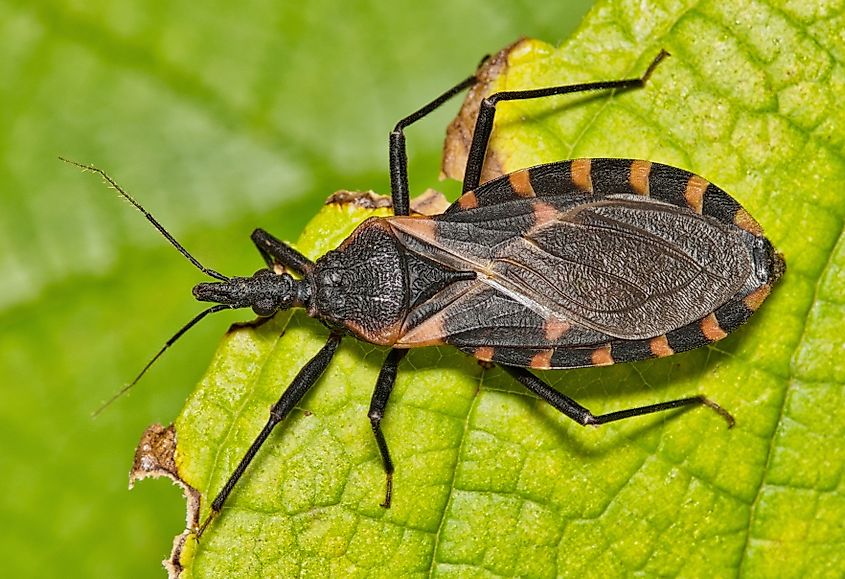
Also called triatomine bugs, these insects can transmit serious diseases, which is what makes them so dangerous. Characterized by their long bodies and cone-shaped heads, their colors range from brown to black, with red, yellow, and orange markings. They can be found living in holes, cracks, and other entry points of houses as well as debris piles and animal burrows. Kissing bugs feast on blood, similar to mosquitos, but mainly like to target near the eyes and mouth.
Kissing bugs can carry the Chagas disease, caused by parasites called Trypanosoma cruzi. These parasites live inside the feces of the bug and can enter the skin through bite sites. Kissing bugs are nocturnal, and often bite while their victim is asleep. If you are allergic to the bug's saliva, you can experience itching and redness or, in more serious cases, anaphylaxis. If you get infected with Chagas, beginning symptoms can be similar to the flu. More serious complications later on include irregular heart rhythms, weakened heart muscles, enlarged heart, difficulties eating, and difficulty having a bowel movement.
Giant Desert Centipede
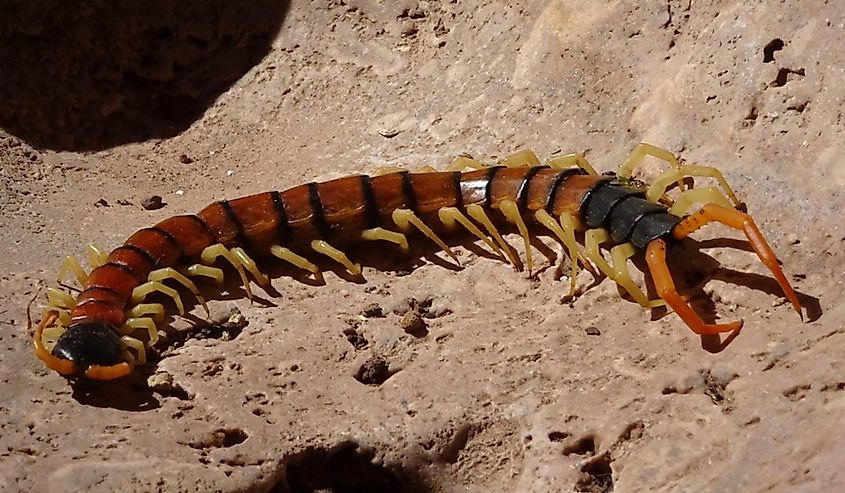
These centipedes are characterized by their flat bodies with many segments, each containing a pair of legs except for the front and back. It has a large pair of antennae on its head and is commonly orange with a black head and tail. They can be found under leaves, rocks, logs, and in buildings. They are nocturnal, preferring to hunt at night. Using venomous forcipules, they inject a paralyzing venom, which aids them in their quest for food. They are fast and are able to climb and swim.
If bitten, you can expect extreme pain, redness, swelling, nausea, and headaches. It is also possible to be allergic to the venom, which can cause far more severe issues, such as anaphylaxis. If bitten, seek medical attention. Avoid these centipedes by not lifting possible hiding spots or attempting to pick them up. They are highly aggressive and will attack if threatened.
Tarantula Hawks
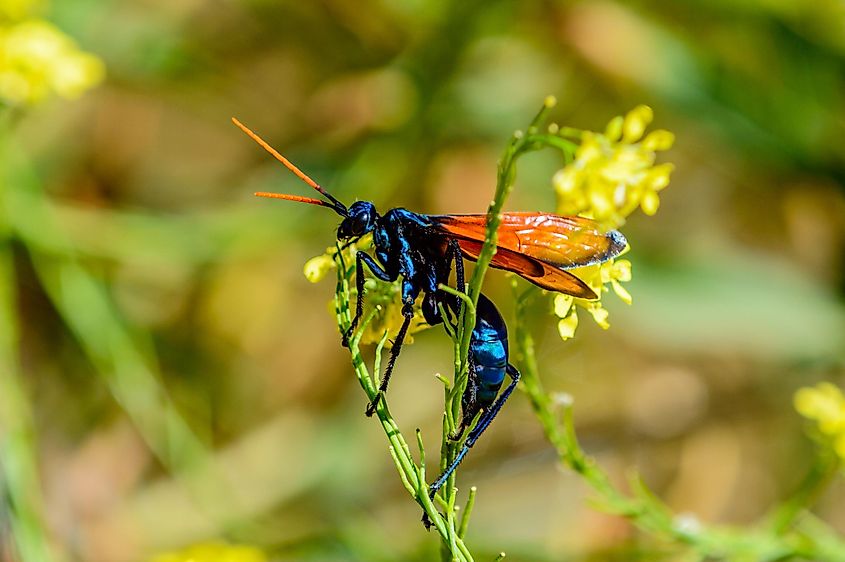
Tarantula hawks are a large species of wasp known to hunt spiders. They grow up to 2 inches in length, with bodies ranging in shades of dark blue, and orange or amber wings. They mostly feast on nectar, though the females have a disturbing spider-hunting ritual. Females are the only ones with stingers, which they use to paralyze spiders. Dragging the spider back to their burrow, they will lay their egg on the spider, then seal the burrow. As the egg hatches, the larvae will feast on the spider.
Tarantula hawks aren't necessarily aggressive towards humans but will attack in self-defense. Found in deserts, scrublands, and woodlands, they fly close to the ground in search of spiders. Their sting is known to be incredibly painful, ranking as one of the most painful insect stings alongside bullet ants. Intense pain can last for minutes on end and can feel similar to an electric shock. Complications can occur if the person stung is allergic, which can cause severe swelling, redness, and anaphylaxis.
Prairie Rattlesnake
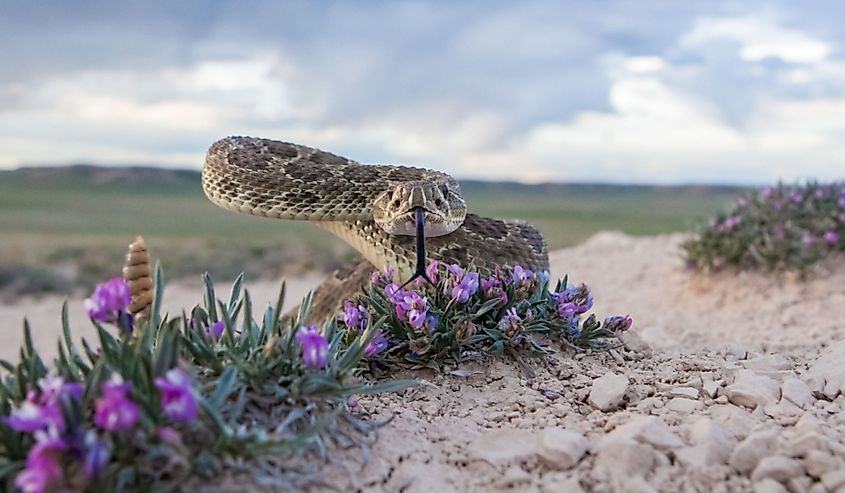
Prairie rattlesnakes are pit vipers known for their iconic rattling tails, which they use to ward off predators. Typically between 3 and 5 feet, they are light brown or greyish brown with darker blotches. They enjoy living in grasslands, hillsides, and rocky terrains with plenty of cover. They also will make their way into burrows belonging to rodents. They eat reptiles, birds, and smaller mammals, which they subdue with their venom and swallow whole.
Prairie rattlesnakes don't hunt humans, but bites do occur. If you are far enough away, they will warn you to stay back by shaking their rattles and showing their teeth. If you are close enough for them to strike, their bites will release hemotoxins, which cause red blood cells to die and blood to not clot properly. Bites usually happen from accidentally stepping near them or on them, or going out of your way to get close. Besides tissue death and bleeding, swelling, extreme pain, and breathing issues can occur. Seek medical help immediately after being bitten so that an anti-venom can be administered.
Brown Recluse
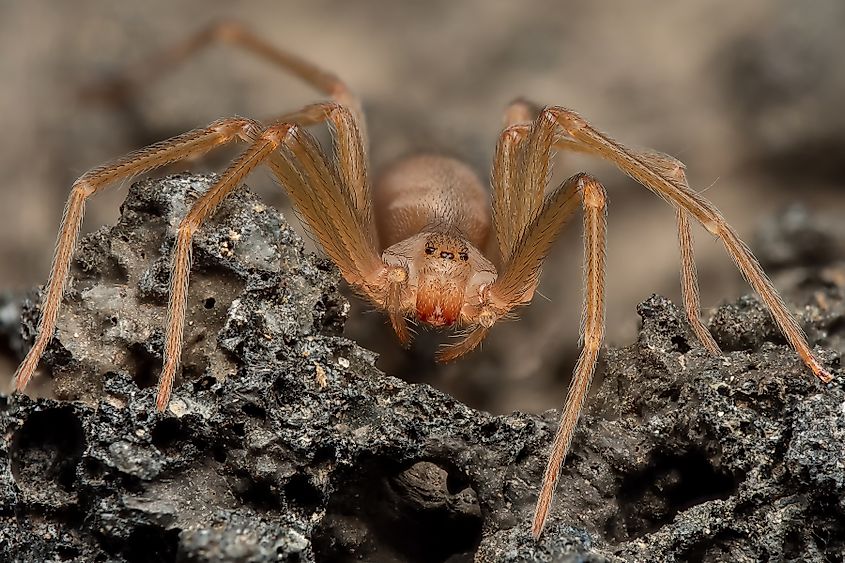
Brown recluse spiders, often confused with hobo and house spiders, are brown in color with a distinctive violin pattern on their dorsum. They keep to secluded areas such as basements, cellars, attics, sheds, woodpiles, and debris piles. They can also find their way into clothing and bedding. They are mainly nocturnal hunters, feasting on insects which they actively hunt. They don't wait for prey to come to their webs, which are instead used as a home.
Run-ins with brown recluse spiders usually happen due to their hiding spots being disturbed. This can be from crawling into a bed where one has gotten between the covers, digging through debris, or leaning or laying somewhere close by. If bitten, their venom causes tissue damage, as well as symptoms like pain, itchiness, redness, fever, chills, and ulcers that can lead to infection. If bitten, seek medical attention to avoid possible complications.
Despite having dangerous carnivores, venomous snakes, and insects with powerful stings and diseases, Colorado is still a beautiful destination to visit. Run-ins with these animals are rare, but that doesn't mean you shouldn't be prepared. Listen to state warnings and alerts, carry recommended supplies such as bear spray and a cellphone, and familiarize yourself with maps of the area, potential hiding spots for these creatures, and the nearest medical facility should something happen. Most importantly, enjoy everything Colorado has to offer without fear.











